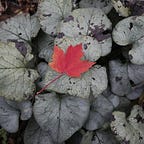WE WOKE UP SOME YEARS AGO ABOUT THE
CONSEQUENCES OF OZONE DEPLETION, THE
HOLE IN THE ATMOSPHERE. YOU CAN’T SEE IT.
YOU CAN’T TASTE IT. YOU CAN’T SMELL IT. BUT
NOW WE DO REGARD THAT AS A KEY ISSUE. IT’S
A SCIENTIFIC FINDING.- Sylvia Earle
Ozone Layer Depletion and Recovery
The ozone layer has been a topic of conversation for many years in my science classes growing up. The topic taught with such despair and urgency upon the action, got all the students itching for more information. It was then that teachers would move on to a broader topic of conversation, leaving us wanting answers to the situation with the ozone layer and what was currently being done. Furthermore, it was until I reached this point in my life that I started to hear about how the momentous changes regarding the action around the ozone layer depletion have led to its gradual recovery. But how did that happen, and can we replicate that process with other climate change problems?
What is the Ozone Layer?
Ozone or O₃ is an inorganic chemical compound made up of three oxygen molecules, these compounds are constantly breaking apart and reforming. The ozone layer makes up a layer of the stratosphere, which is the second layer of the earth’s atmosphere found roughly 25 miles above the ground. The ozone layer acts like a sponge as it absorbs some of the radiation from the sun. The type of radiation the ozone is most well known for protecting us from is UV light (UVA and UVB), the ozone layer absorbs around 98% of the UV light coming from the sun. When UVB comes into contact with our skin, it can cause sunburns and cancers such as basal cell carcinoma and squamous cell carcinoma. However, UVA light has greater adverse effects than its counterpart because when it is absorbed into the skin it can lead to skin cancer and melanoma.
What is the Ozone Layer?
Ozone or O₃ is an inorganic chemical compound made up of three oxygen molecules, these compounds are constantly breaking apart and reforming. The ozone layer makes up a layer of the stratosphere, which is the second layer of the earth’s atmosphere found roughly twenty-five miles above the ground. The ozone layer acts like a sponge as it absorbs part of the radiation from the sun. The type of radiation the ozone is most well known for protecting us from is UV light (UVA and UVB), the ozone layer absorbs around 98% of the UV light coming from the sun. When UVB comes into contact with our skin, it can cause sunburns and cancers such as basal cell carcinoma and squamous cell carcinoma. However, UVA light has greater adverse effects than its counterpart because when absorbed into the skin it can lead to skin cancer and melanoma.
Ozone Depletion Causes, and Recovery
Ozone Depletion describes the thinning of the ozone layer, caused by chemicals known as chlorofluorocarbons (CFCs). These chemicals contained a mix of carbon, chlorine, and fluorine elements which create difficulty for the oxygen molecules to reform in the stratosphere. This has caused a hole in our ozone layer located over Antarctica, which has been shrinking in size gradually through the years from the time it was discovered to the present day.
Concern about CFCs first arose in 1974 due to American scientists Mario Molina and F. Sherwood Rowland, but their hypothesis was not seen with the same concern, it was only years later when scientific studies were done that more people began to see the urgency needed for action. This prompted governments to take active measures to lower the number of CFCs in the atmosphere through the Montreal Protocol, signed in 1987 with the purpose to phase out the production and consumption of ozone-depleting products by 1995. Chlorofluorocarbons are organic compounds that are not naturally occurring and are man-made gases. CFCs were present in refrigerators and air-conditioners as they are used as coolants and were also found in Aerosol sprays and propellant liquid gasses. Due to the severity of the issue, many governmental bodies have banned the production of aerosol sprays containing CFCs. CFCs can last in the atmosphere for a long amount of time they have a life span of 50 to 100 years and so their impacts can last for an extended period of time.
In recent news, scientists from NASA and NOAA have stated that the ozone hole has been shrinking. Between September 7 and October 1, 2022, the ozone hole was an average size of 8.9 million square miles and NASA claims that the size of the ozone is smaller than what it was in the previous year and will continue to shrink gradually. The shrinking of the ozone layer can be accredited to the Montreal Protocol, although scientists are worried about the impacts of recent disasters and volcanic eruptions (Hunga Tonga-Hunga Ha’apai volcano erupted in January 2022) there has been no correlation between those events and the ozone layer as of now.
Chlorofluorocarbon (CFC) — definition, formulas, examples — TOPPR guides. Toppr. (n.d.). Retrieved February 12, 2023, from https://www.toppr.com/guides/chemistry/atoms-and-molecules/chlorofluorocarbon-cfc-definition-formulas-examples/
Costa, H., Sprout, E., Teng, S., McDaniel, M., Hunt, J., Boudreau, D., Ramroop, T., Rutledge, K., & Hill, H. (2022, November 22). Ozone layer. Education. Retrieved from https://education.nationalgeographic.org/resource/ozone-layer/
Ramsayer, K. (2022, October 25). Ozone Hole continues shrinking in 2022, NASA and NOAA scientists say. NASA. Retrieved from https://www.nasa.gov/esnt/2022/ozone-hole-continues-shrinking-in-2022-nasa-and-noaa-scientists-say
